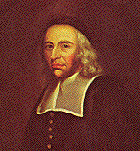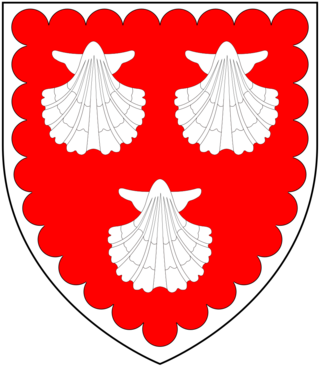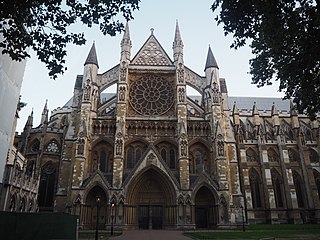This is a list of the colonial governors of North Carolina.
| Governor | Took office | Left office |
|---|---|---|
| William Drummond | 1664 | 1667 |
| Samuel Stephens | 1667 | 1669 |
| Peter Carteret | 1670 | 1672 |
| John Jenkins | 1672 | 1675 |
| Thomas Eastchurch | 1675 | 1676 |
| John Jenkins | 1676 | 1677 |
| Thomas Miller | 1677 | 1677 |
| John Harvey | 1679 | 1679 |
| Henry Wilkinson [lower-alpha 1] | — | — |
| John Jenkins | 1680 | 1681 |
| Seth Sothel | 1682 | 1689 |

John Leverett was an early Anglo-American lawyer, politician, educator, and President of Harvard College.
Tragédie en musique, also known as tragédie lyrique, is a genre of French opera introduced by Jean-Baptiste Lully and used by his followers until the second half of the eighteenth century. Operas in this genre are usually based on stories from classical mythology or the Italian romantic epics of Tasso and Ariosto. The stories may not necessarily have a tragic ending – in fact, most do not – but the works' atmospheres are suffused throughout with an affect of nobility and stateliness. The standard tragédie en musique has five acts. Early works in the genre were preceded by an allegorical prologue and, during the lifetime of Louis XIV, these generally celebrated the king's noble qualities and his prowess in war. Each of the five acts usually follows a basic pattern, opening with an aria in which one of the main characters expresses their feelings, followed by dialogue in recitative interspersed with short arias, in which the main business of the plot occurs. Each act traditionally ends with a divertissement, offering great opportunities for the chorus and the ballet troupe. Composers sometimes changed the order of these features in an act for dramatic reasons.
This is a timeline of the history of piracy.
Cary's Rebellion was an uprising against the Deputy Governor of North-Carolina in 1711 led by Thomas Cary, who refused to give up his governorship to Edward Hyde. The rebellion was a part of a long-standing tension between religious and political groups in northern Carolina, generally divided between the Quaker party, of which Cary was a part, and the Church of England party, to which Hyde belonged.

Edward Hyde was a British colonial administrator who served as the first governor of North Carolina from 24 January until 8 September in 1712, when he died in office. He governed during a time of tremendous turmoil, including an internal revolt known as Cary's Rebellion and an American Indian conflict called the Tuscarora War.

General Thomas Erle PC of Charborough, Dorset, was a general in the English Army and, thereafter, the British Army. He was also a Whig politician who sat in the House of Commons of England and of Great Britain from 1678 to 1718. He was Governor of Portsmouth and a Lieutenant-General of the Ordnance.

Edward Stanton (1681–1734) was an English stonemason, builder and sculptor.
Henderson Walker (1659-1704) was the Acting Deputy Governor of North Carolina from 1699 to 1704. He is better known for his contribution in the founding of the Church of England in the Albemarle Sound region.
Köse Halil Pasha, also known as Khalil Pasha al-Kawsaj, was an Ottoman statesman who served several high-level roles in the Ottoman Empire's administration, including serving as Defterdar and the Ottoman governor of Bosnia Eyalet (1699–1702), Erzurum Eyalet (1703–04), Van Eyalet (1704–06), Basra Eyalet, Sidon Eyalet (1708–1710), and Egypt Eyalet (1710–11). During his tenure in Erzurum, Hahil Pasha was in command of a military expedition in Georgia in 1703.
Thomas Harvey (1668–1699) was the Deputy Governor of North Carolina from 1694 to 1699.
William Glover (1653–1713) was the Acting Deputy Governor of North Carolina from 1706 to 1708.
James Converse was a farmer, soldier and office holder in Massachusetts, distinguishing himself as a military leader during the French and Indian Wars. Prominent in public affairs, he also served as a speaker of the Massachusetts House of Representatives.